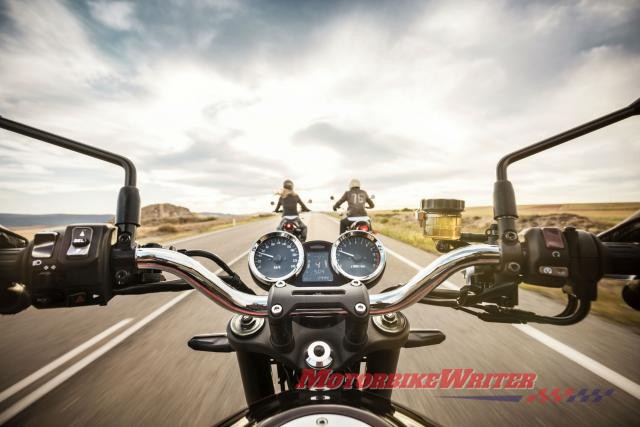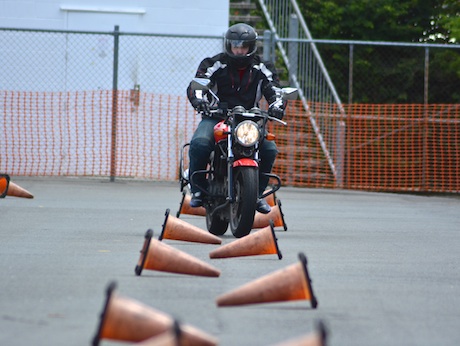If you’ve ridden a bicycle, counter steering will come naturally to you, so why would it be necessary to practise counter steering?
The problem is that, in an emergency situation, your instinct is to turn the handlebars toward the direction you want to go.
Here is a graphic video example of what can happen.
Notice the rider makes a couple of steering corrections.
There are a number of mistakes this rider makes.
First, the rider enters the corner too shallow which makes the bike run wide. The rider should take a wider approach so the bike is leaning and turning away from oncoming traffic.
Second, the rider sees the truck and develops target fixation. That is, the rider looks at what they could hit and naturally steers toward it.
Read about target fixation and how to make it work to your advantage.
The third problem is that the rider has not practised counter steering, so they swap back and forth between steering and counter-steering, weaving into the truck.
You need to practise counter steering to ensure that it becomes your reflex action in an emergency.
Read what counter steering is.
How to practise counter steering
You should start at slow speeds and gradually build up speed.
However, don’t try counter steering at a really slow walking pace as it doesn’t work.
Find a vacant carpark (you may need to get permission) or a quiet stretch of road and start practising at about 20km/h. (Keep your eyes peeled for any approaching vehicle in front or behind.)
In you are in a vacant carpark you can use cones or other safe objects to weave around.
Otherwise weave around white line markings or parking bays.
Make sure your forearms are parallel with the grips. Depending on your handlebars, this may require you to crouch and drop your shoulders and elbows.
In this position, you are more likely to push and pull the bars, rather than just lean on them. This has more effect on the steering.
Keep your torso upright as you push and pull the bars, noting that when you push the right bar, the bike drops to the right and turns right and vice versa.
Gradually build up speed, noting how little handlebar input you need to effect a turn.
This exercise is not designed for cornering, but for swerving to avoid an obstacle in an emergency.
You most likely already use counter steering techniques when you corner.
You will find that you can adjust your bike’s angle quicker and swerve faster if you allow the bike to lean while keeping your body upright.
Trying to lean your body as well increases the weight you are trying to lean, so the response is slower.
However, at highway speeds, you will need to lean with the bike or it could unsettle the machine and cause a high side.
Like any skill, practice will make it become a natural reaction.



